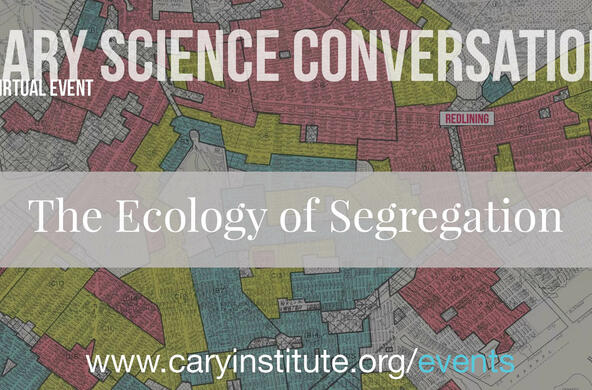Across the US, cities have embraced green infrastructure as a way to mitigate flooding, excessive heat, extreme weather, and other urban hazards. Can greening efforts also address social injustices and inequality? A new analysis in Landscape and Urban Planning concludes that this will require fundamental transformation in planning processes, and puts forth an assessment framework and recommendations for advancing more equitable and just green infrastructure.
The study, led by researchers at Cary Institute of Ecosystem Studies and The New School’s Urban Systems Lab, is the most comprehensive review to date of city-led green infrastructure planning in the US. The team examined how equity and justice were addressed in 122 official city planning documents from 20 US cities, using a novel framework that focused on vision, process, and distribution. They found widespread failure of plans to conceptualize and operationalize equity planning principles.

“Given all that we know about the uneven urban risks documented by environmental justice scholars, results were sobering. The hazards that green infrastructure seeks to heal – air pollution, urban heat, flooding, and so forth – are disproportionately felt by marginalized communities. Yet city agencies and governments have generally not embedded equity or justice as a central concern of planning efforts,” notes Dr. Steward Pickett, an urban ecologist and Distinguished Senior Scientist at Cary Institute.
While 80% of the city plans reviewed looked to green infrastructure to manage hazards and provide multiple benefits, the majority failed to address social injustice and inequity. Only 13% of plans defined equity or justice, 10% engaged affected communities in the planning, implementation and evaluation of projects, and less than 10% identified the causes of uneven risk distributions and vulnerability.
If formal green infrastructure planning in US cities does not adapt to address equity concerns, the authors caution that current practices will likely deepen systemic inequalities. Their assessment framework can serve as a tool for other researchers and communities seeking to improve the equity of planning processes. It evaluates: (1) how equity and justice are conceptualized and defined, (2) how the benefits and burdens of green infrastructure are distributed, and (3) how communities are involved in the planning, design, implementation, and evaluation of green infrastructure projects.
“Many US cities use green infrastructure to comply with storm water regulations in the Clean Water Act. Significant investments are being made – often without scrutinizing how the benefits and burdens are distributed. Who gets jobs? Who is displaced? Whose voices are heard in the planning process? These are among the questions we need to address,” explains lead author Dr. Zbigniew Grabowski, who worked on the analysis as a Postdoctoral Associate at Cary Institute and The New School’s Urban Systems Lab, and is now an Associate Extension Educator in Water Quality at the University of Connecticut’s Center for Land Use Education and Research.

Three major recommendations emerged from the 20-city analysis. First, plans need to define equity and justice in collaboration with communities affected by current and past planning efforts. Second, plans must identify who benefits from green infrastructure, and ensure programs provide meaningful and well paying jobs for affected communities, including their participation in the planning processes.
Finally, there is a need to increase the inclusivity of planning as part of a larger project of transforming how planning is performed, by whom, and for whom. This will require changes to federal and state policies affecting how green infrastructure investments are made, many of which are actively evolving and would benefit from direct input from marginalized communities.
Grabowski notes, “Given that many city infrastructure programs receive direct or indirect federal investment, we found it surprising that there is substantive failure to address equity and justice issues. City planning departments, as well as state and federal agencies working in urban settings, can address these issues by dedicating funds from infrastructure programs to invest in community-led planning processes.”
“Green infrastructure has the promise of adding real value to our cities. To realize the potential of these approaches to minimize hazards and benefit all communities, we must confront long standing structural inequalities and the planning processes that created them,” concludes Dr. Timon McPhearson, a Research Fellow at Cary Institute and Director of the Urban Systems Lab.
More details and other project publications can be found at www.giequity.org.
Citation
Transforming US urban green infrastructure planning to address equity
Grabowski, Zbigniew J., Timon McPhearson, and Steward T.A. Pickett. 2023. “Transforming Us Urban Green Infrastructure Planning To Address Equity”. Landscape And Urban Planning 229: 104591. doi: https://doi.org/10.1016/j.landurbplan.2022.104591.
Funding for this analysis was provided in part by the JPB Foundation (under the grant “Is Green Infrastructure a Universal Good?”), the National Science Foundation (grants #1444755, #1927167, and #193493), and the German Research Foundation (“Urban Green Infrastructure - Training Next Generation Professionals for Integrated Urban Planning Research").





